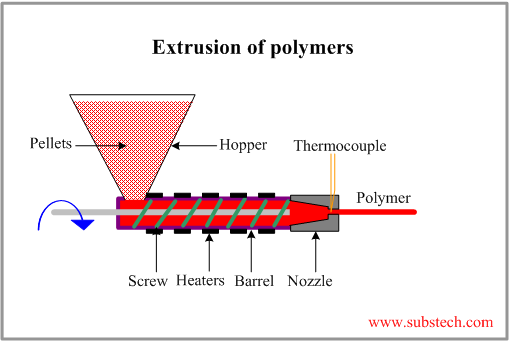Hot Extrusion: Hot extrusion is done at fairly high temperatures, approximately 50 to 75 % of the melting point of the metal. The pressures can range from 35-700 MPa (5076 - 101,525 psi). Due to the high temperatures and pressures and its detrimental effect on the die life as well as other components, good lubrication is necessary. Oil and graphite work at lower temperatures, whereas at higher temperatures glass powder is used.
Typical parts produced by extrusions are trim parts used in automotive and construction applications, window frame members, railings, aircraft structural parts.
Other Topics
IC engine,
Air
Standard Cycles, Method
of Ignition, Gear Types,
mechanical
Engineering, Gears, spur gears,Worm gears,English books,Photoshop
tutorials,Manufacturing,Gears pdf,Computer
science,Harry
potter,Best
100 english books,IC
engine,Metal
Casting,SAND
Casting Quiz,Casting
patterns quiz,Patterns,Mechnical
Previous Years Gate Question Papers ,Mechanical-old-question-paper,Investment
Casting,Workshop
Technology Quiz,Milling
Quiz,Metal
Quiz,Mechanical
Process Quiz,Casting
Process Quiz,Green Sand,Impression
Die Forging,Pricision
Forging,Precision
forgings vs conventional forging,Flashless
forging,Forging
defects,Die
Material for forging of Steel,Cearamic
and Carbide Material for Forging,Forging
Quiz,Cold
Extrusion


 .
.
